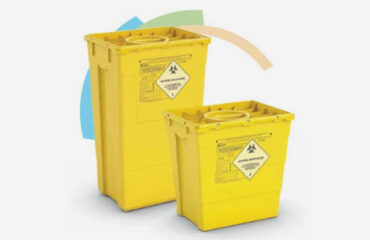The Best Guide To Reclaim Waste
Reclaim Waste Can Be Fun For Everyone
Table of ContentsThings about Reclaim WasteThe Single Strategy To Use For Reclaim WasteReclaim Waste for BeginnersGetting The Reclaim Waste To WorkThe 10-Second Trick For Reclaim Waste
Domestic sewage waste refers to the waste and products from a residential septic storage tank. The correct monitoring and disposal of residential sewer waste require fluid waste to be moved to a sewage therapy plant where the proper techniques and tools are applied to purify and dispose of waste.
Industrial waste often consists of potential risks, such as combustible products or a combination of liquid and solid waste products, and calls for an advanced and detailed disposal procedure. The disposal of business waste commonly involves the filtering of waste before transport to guarantee secure and proper disposal. Industrial waste is developed from by-products and drainage of industrial procedures and manufacturing.
This type of waste can not utilize the exact same sewer monitoring transportation or processes as septic or commercial liquids. The industrial waste management procedure needs the examination and screening of fluid waste prior to it goes through the disposal process (liquid waste removal melbourne). Drainage waste is the fluid waste that originates from overflow and excess stormwater in highly inhabited locations or cities
Runoff waste can trigger contamination and flooding if not handled correctly. Making sure proper waste management can stop catastrophes and reduce environmental injury.
Fascination About Reclaim Waste
Call PROS Services today to learn more about our waste monitoring and disposal solutions and the correct methods to care for the fluid waste you generate.
(https://www.anyflip.com/homepage/imqzz#About)Do you recognize what happens to your water when you pull the plug, flush the commode or drain pipes the cleaning equipment? No? Well, it's worth knowing. This so-called 'wastewater' is not just a crucial resource but, after therapy, will certainly be launched to our land, waterways or the sea. Utilized water from bathrooms, showers, baths, cooking area sinks, washings and commercial procedures is referred to as wastewater.

water utilized to cool down equipment or tidy plant and equipment). Stormwater, a type of wastewater, is overflow that flows from farming and metropolitan locations such as roofing systems, parks, yards, roads, courses and gutters into stormwater drains pipes, after rain. Stormwater streams without treatment straight to local creeks or rivers, at some point getting to the sea.
The smart Trick of Reclaim Waste That Nobody is Talking About
In Queensland, a lot of wastewater is dealt with at sewage therapy plants. Wastewater is carried from residential or industrial websites with a system of sewage systems and pump terminals, referred to as sewerage reticulation, to a sewage treatment plant. Local governments construct, preserve and operate most sewer therapy plants. Operators are certified under the Environmental Defense Act 1994 to discharge cured wastewater at an appropriate ecological requirement right into waterways.
The Division of Natural Resources recommends regional governments concerning managing, operating and keeping sewage systems and treatment plants. In unsewered areas, regional federal governments may call for householders to mount specific or house sewer therapy systems to treat residential wastewater from bathrooms, kitchens, restrooms and laundries. The Department of Natural Resources authorizes making use of home systems when they are verified to be efficient.
Many stormwater receives no treatment. In some new neighborhoods, treatment of some stormwater to eliminate litter, sand and gravel has actually started making use of gross toxin traps. Wastewater treatment happens in 4 phases: Eliminates solid issue. Larger solids, such as plastics and other things mistakenly discharged to drains, are removed when wastewater is gone through screens.
Wastewater then streams right into large tanks where solids work out and are eliminated as sludge. Grease and residue are skimmed from the surface. Utilizes little living organisms referred to as micro-organisms to break down and eliminate remaining liquified wastes and fine fragments. Micro-organisms and wastes are included in the sludge. Gets rid of nitrogen and phosphorus nutrients that can trigger algal dig this blossoms in our waterways and intimidate marine life.
Reclaim Waste for Beginners
Nutrient removal is not readily available in any way sewer therapy plants since it needs expensive specialized devices. It is coming to be more common in Queensland. Clear liquid effluent produced after treatment might still have disease-causing micro-organisms. If this effluent is released into waterways such as rivers or the sea, the micro-organisms will eventually die out.

A lot of wastewater flows into the sewage system. Under the Act, neighborhood governments carry out approvals and permits for ecologically relevant activities (Ages) including wastewater launches that might have a local influence.
The Definitive Guide for Reclaim Waste
Or else, samples are taken for research laboratory analysis. Often lots of examinations are required to develop the degrees of each of the various contaminants such as oils, hefty steels and pesticides in water. Monitoring offers valid info regarding water high quality and can verify that permit conditions are being fulfilled. The info gotten via tracking gives the basis for making water top quality decisions.